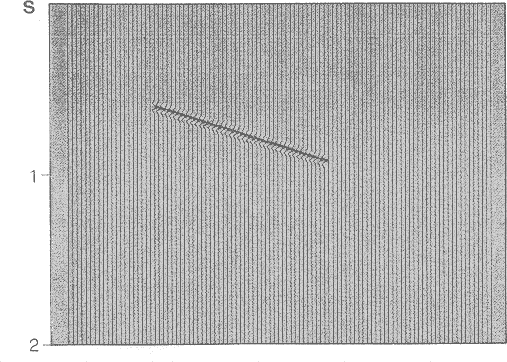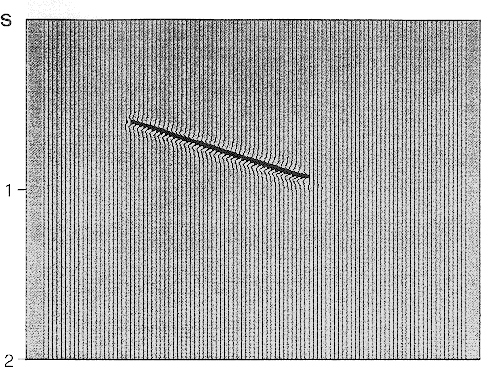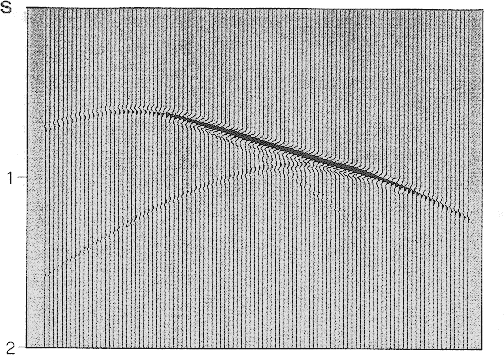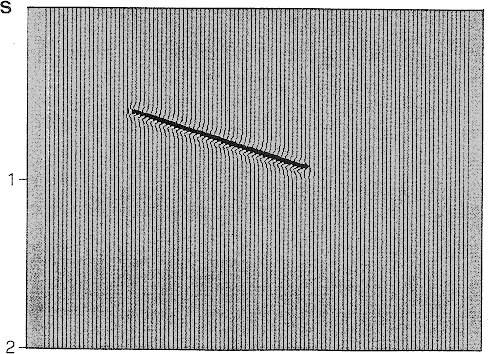




Next: Testing for Kirchhoff migration
Up: Migration algorithm
Previous: Constant velocity sections
The migration algorithm was adapted to handle variations in migration
velocity (which is equivalent to rms velocity)
with observed travel times and spatial locations.
This was done by defining the velocity as a function of observation time
and space, respectively. Illustrations for both cases shall be made
on the same dipping reflector model shown in Figure 6.
f3-11a
Figure 6
Dipping reflector (dip, 8 ms/trace).

f3-15a
Figure 7
Zero-offset seismic response of dipping reflector model
(velocity function, time-variant).

f3-15b
Figure 8
Output migrated section of Figure 7.

Figure 7 shows the zero-offset seismic response of this model. The
velocity function used was taken from a real seismic data record
section, and it varies only with observation time. The same velocity function was
used to migrate this section, and the output record is shown in Figure
8. The dipping reflector is correctly repositioned, temporally and
spatially, to its true subsurface location.
The same results were obtained when spatial variations in velocity
were taken into account. The migrated output section (Figure 10) of
the zero-offset section shown in Figure 9 is the correct image of the
model dipping reflector.
f3-16a
Figure 9
Zero-offset seismic response of dipping reflector model
(velocity function, space-variant).

f3-16b
Figure 10
Output migrated section of Figure 9.

Thus it has been shown that if the velocity function is known
accurately both in observation time and spatial location, Kirchhoff
migration is
performed successfully on stacked data. Similar results can be
shown for the case of non-zero offset data.





Next: Testing for Kirchhoff migration
Up: Migration algorithm
Previous: Constant velocity sections
Stanford Exploration Project
11/11/1997





